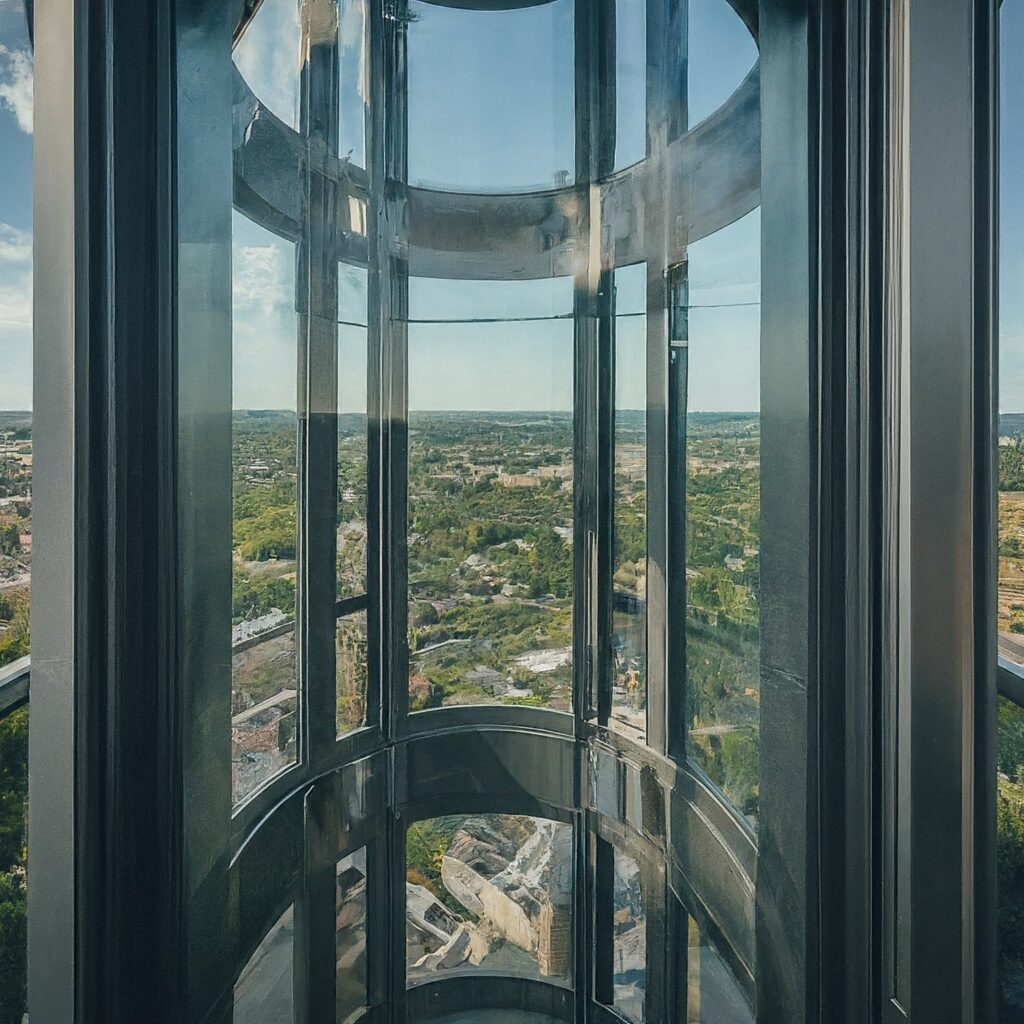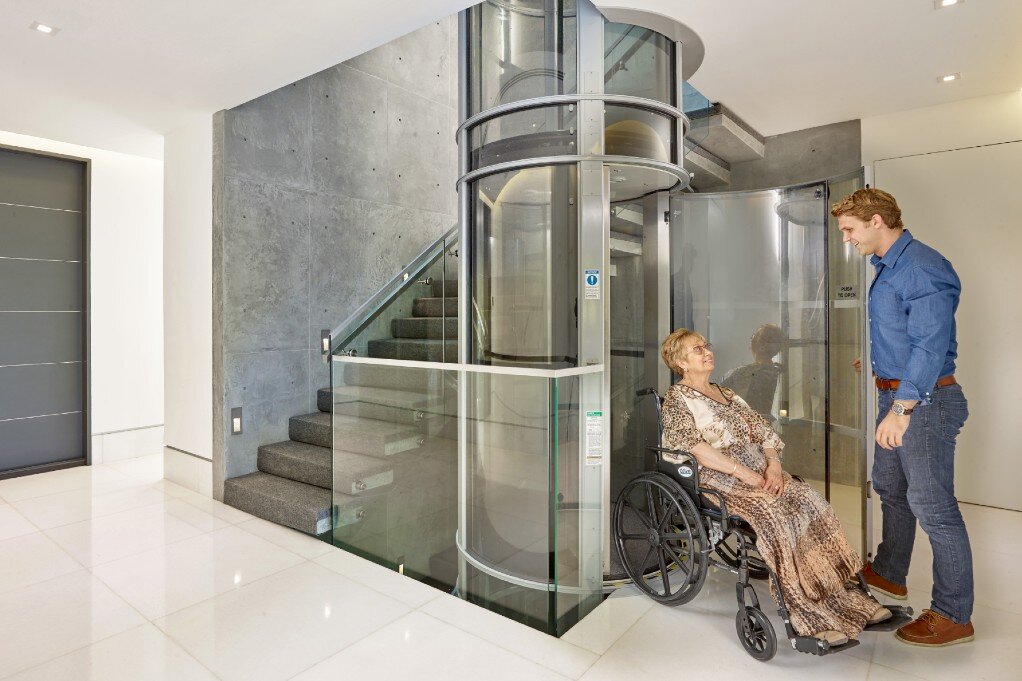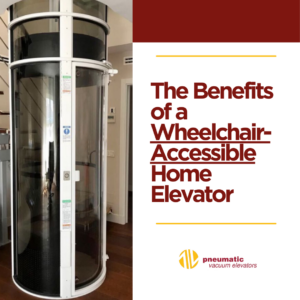Pneumatic residential lifts, also known as vacuum elevators, offer a futuristic solution for vertical transportation within your living space. These innovative lifts utilize the power of air pressure to propel a capsule smoothly between floors, eliminating the need for stairs and enhancing accessibility. Let’s explore the world of pneumatic residential lifts, exploring their workings, benefits, considerations, and potential drawbacks to help you decide if they’re the perfect fit for your home.
How Pneumatic Residential Lifts Work
The magic behind pneumatic lifts lies in their ingenious use of air pressure. Unlike traditional elevators that rely on cables and counterweights, these lifts operate within a transparent, cylindrical tube. Here’s a breakdown of the key components:
- The Capsule: This airtight cabin comfortably accommodates passengers and cargo. Its design prioritizes safety and comfort, often featuring emergency stop buttons, intercoms, and elegant finishes.
- The Tube: Made of durable, transparent material like acrylic, the tube serves as the vertical passageway for the capsule. Its sleek aesthetics enhance the interior design of your home.
- The Vacuum System: Nestled at the top of the tube, this system consists of powerful turbines that create a vacuum within the tube. This pressure differential is what propels the capsule upwards.
- Valves and Controls: A sophisticated system of valves regulates airflow within the tube. When we select the floor, the corresponding valve opens. It allows air back into the tube, and gently lowering the capsule.
The process is remarkably simple yet effective. When you press a button for your desired floor, the vacuum system activates, creating a pressure difference that lifts the capsule. To descend, valves release air back into the tube, allowing for a controlled descent due to gravity. The entire system needs electronic management, ensuring smooth and safe operation.
Advantages of Pneumatic Lifts: A Breath of Fresh Air for Your Home

Pneumatic lifts offer a compelling alternative to traditional elevators and stairlifts, boasting several advantages:
- Space-Saving Design: Unlike traditional elevators that require a hoistway and machine room, pneumatic lifts only necessitate the installation of the tube itself. This makes them ideal for retrofitting existing homes where space is a constraint.
- Quick and Easy Installation: The modular design of pneumatic lifts translates to a relatively quick installation process, typically taking just a few days compared to weeks for traditional elevators.
- Minimal Maintenance: The reliance on air pressure reduces the need for extensive lubrication and complex mechanical components, resulting in lower maintenance requirements.
- Energy Efficiency: Operating on a single-phase power supply with an energy consumption comparable to a washer and dryer, pneumatic lifts are an environmentally friendly choice.
- Aesthetics and Ambiance: The transparent tube and sleek capsule create a captivating visual element, adding a futuristic touch to your home’s interior design. This panoramic view can also be calming for users experiencing claustrophobia.
- Accessibility for All: Pneumatic lifts are a boon for individuals with limited mobility. They provide a safe and convenient way to navigate different floors, promoting independence and inclusivity within the home.
Considerations Before You Take Flight: Factors to Ponder
While pneumatic lifts offer numerous benefits, it’s crucial to evaluate the following factors before making a decision:
- Cost: Pneumatic lifts can be more expensive than stairlifts but generally less costly than traditional elevators.
- Weight Capacity: These lifts typically have a lower weight capacity than traditional elevators, ranging from one to three passengers or wheelchairs.
- Height Limitations: Due to the nature of the vacuum system, pneumatic lifts are best for homes with a maximum of three or four floors.
- Noise Levels: The operation of the vacuum system might generate some noise, though advancements have minimized this compared to earlier models.
- Local Regulations: Building codes in your area might have specific regulations regarding the installation of pneumatic lifts. It’s essential to consult with local authorities beforehand.
Safety First: A Secure Ascent with Pneumatic Residential Lifts
Safety is paramount with any home mobility solution. Pneumatic lifts have several safety features, including:
- Emergency Stop Button: Located within the capsule, this button allows passengers to bring the lift to a halt immediately.
- Backup Battery System: In case of a power outage, the backup battery ensures the safe descent of the capsule to the ground floor.
- Pressure Monitoring System: Continuously monitors pressure levels within the tube, triggering an automatic stop if any abnormalities are detected.
- Safety Interlocks: Prevent the lift from operating when the door is not properly shut, ensuring passenger safety.
Additionally, reputable manufacturers prioritize rigorous testing and certification of their pneumatic lifts to meet stringent safety standards.
The Verdict: Are Pneumatic Lifts Right for You?
Having explored the technology, benefits, and considerations, the decision ultimately boils down to your specific needs and preferences. Here’s a breakdown to help you decide:
Ideal for:
- Individuals with limited mobility seeking an accessible and independent way to navigate their home.
- Homeowners with limited space who cannot accommodate a traditional elevator.
- Design enthusiasts who appreciate the sleek aesthetics and futuristic appeal of pneumatic lifts.
- Environmentally conscious individuals seeking an energy-efficient home mobility solution.
Alternatives to Consider:
- Stairlifts: A more affordable option for straight staircases, but may not be suitable for all users with mobility limitations.
- Platform Lifts: Can accommodate wheelchairs and offer vertical access for short distances.
- Home Elevators: Traditional elevators offer higher weight capacity and might be necessary for taller homes, but require significant construction and space.
Consulting with a Professional:
It’s highly recommended to schedule a consultation with a qualified dealer specializing in pneumatic lifts. They can assess your home, discuss your needs, and provide a customized solution.
Frequently Asked Questions About Pneumatic Lifts:
- What is the typical lifespan of a pneumatic lift?
A well-maintained pneumatic lift can last for 20-30 years or even longer. - How much does a pneumatic lift cost?
Costs can vary depending on the size, capacity, and additional features, but typically range from $25,000 to $50,000. - Can I customize the design of the capsule?
Yes, many manufacturers offer customization options for the interior finishes and seating arrangements of the capsule. - Is a building permit required for installing a pneumatic lift?
Building code requirements vary by location. It’s crucial to consult with your local building department to determine if a permit is necessary. - How much space does a pneumatic lift require?
The minimum space needed is the diameter of the tube itself, which typically ranges from 4 to 5 feet. - Can a pneumatic lift be installed outdoors?
Some manufacturers offer weatherproof models, outdoor installations are not as common due to potential weather-related issues. - How long does it take to charge the backup battery?
Backup batteries typically maintain a full charge and do not require frequent charging. - Are pneumatic lifts noisy?
Modern lifts operate with minimal noise compared to earlier models. However, some sound might be noticeable during operation. - Can a pneumatic lift be integrated into an existing home?
Yes, pneumatic lifts are well-suited for retrofitting existing homes due to their space-saving design. - What financing options are available for pneumatic lifts?
Some manufacturers or dealers might offer financing options to help make these lifts more accessible.
By carefully considering the information presented and addressing any lingering questions through consultations with professionals, you can make an informed decision about whether pneumatic lifts are the perfect fit for your home, enhancing your mobility and independence for years to come.








